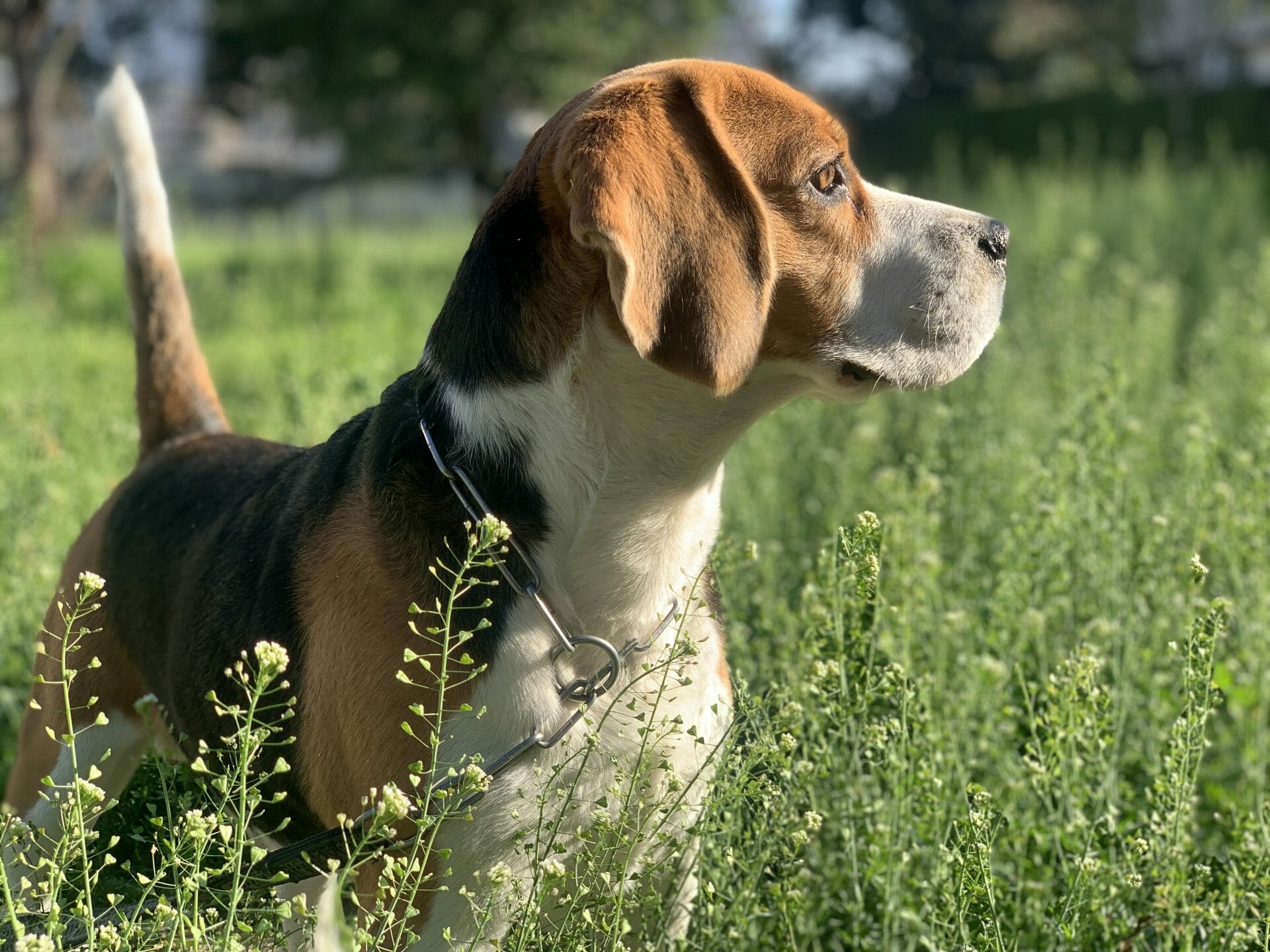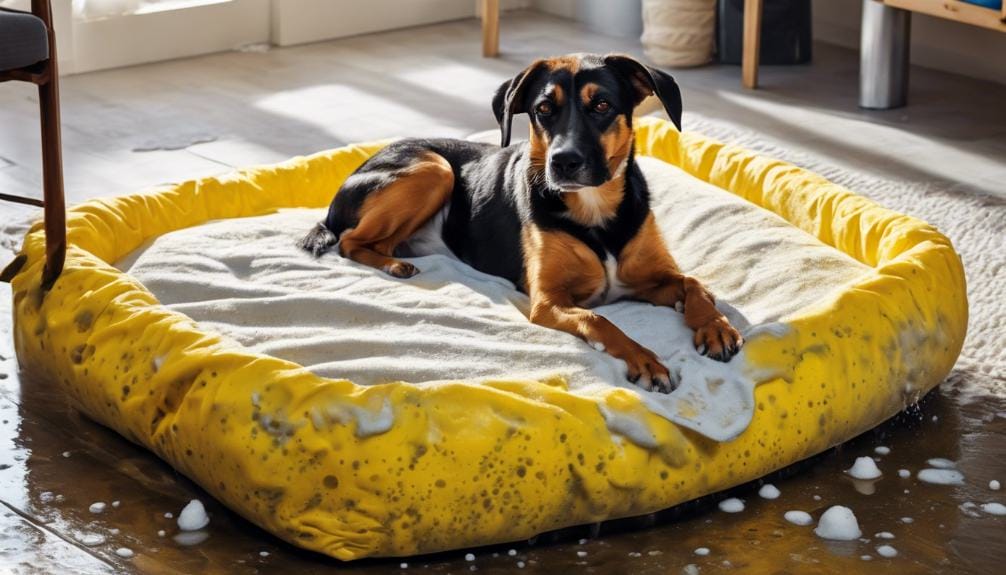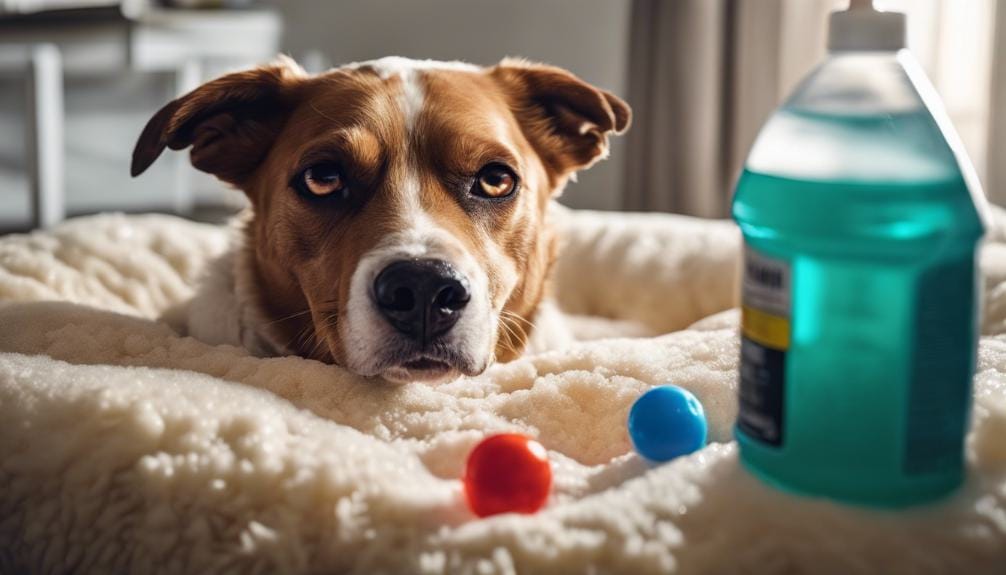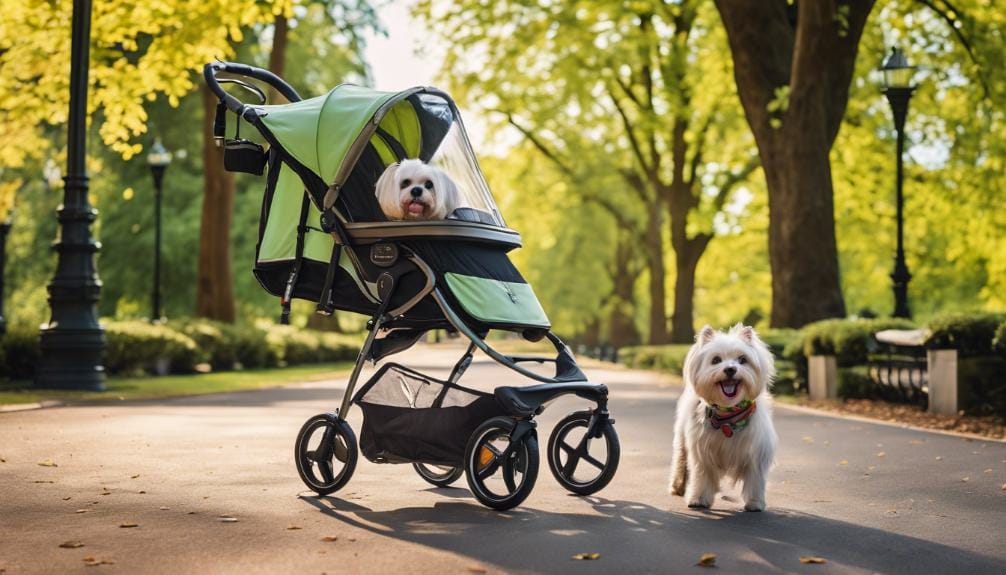Are you a beagle puppy parent struggling to deal with your pup’s biting habit? Don’t worry, there are some simple steps you can take to help curb their behavior. You don’t have to feel helpless in the face of teething and nipping – read on and find out how to stop beagle puppy from biting!
It can be incredibly frustrating when our beloved pets display behaviors that we don’t want them to. From barking at every sound they hear outside, to chewing up shoes or even furniture – all these actions demand our attention as responsible pet owners. One of the most common yet damaging habits puppies develop is biting; if left unchecked it could lead to serious injuries for both humans and animals alike.
If this sounds like something you’re dealing with right now then keep reading because I’m going to tell you exactly what strategies work best when trying to get those sharp little teeth under control. With patience and consistency, you’ll soon see positive results so let’s get started!

Understanding Beagle Puppy Biting
Understanding Beagle Puppy Biting can be a challenge, especially if you’ve just brought home your first puppy. Take it from me – as someone who adopted a five-month old beagle and had to train him not to bite – this isn’t an easy task. But with patience, consistency and the right approach, you can teach your pup how to stop biting and develop better behavior.
Puppy biting is a common problem for new owners; it’s natural for puppies to explore their world through mouthing and chewing on things. This is why it’s important to provide appropriate chew toys that will help redirect your pup away from nipping at hands or furniture. Additionally, teaching them commands like “stop” or “no bite” when they do start gnawing on something other than their toy helps create reinforcement in their mind that this kind of behavior isn’t acceptable.
When teaching puppies (or any dog) how to stop biting, positive reinforcement training works best by giving rewards after good behavior has been shown – such as treats or verbal praise. Keeping sessions short ensures they stay focused and doesn’t overwhelm them so make sure you set aside time each day devoted solely to working on getting rid of the habit of biting. With persistence, love, understanding and lots of practice, soon enough your pup will understand what behaviors are expected from them and won’t resort back to nipping!
Identifying The Cause
Once you’ve begun training your beagle puppy not to bite, it’s important to identify the cause of their behavior. Oftentimes, puppies may become more aggressive when teething; this is due to the discomfort they experience in their gums as new teeth come through. Providing them with appropriate chew toys specifically designed for teething can help alleviate some of that pain and redirect their attention away from biting people or objects.
Fear-based aggression can also play a role in why your pup is biting – if they have had negative experiences before coming into your home, then teaching them how to trust again will take time and patience on both sides. It’s possible they are nipping out of fear so providing reassurance during these moments and displaying calm body language can help reduce any tension between you two. Additionally, making sure you keep up with regular vet visits and stay aware of their breed-specific needs (e.g., exercise) can prevent boredom-based aggression which often results in chewing on furniture or other destructive behaviors.
It’s essential to remember that no matter what causes the biting, consistent training and repetition are key components for breaking bad habits. Reward good behavior whenever possible and create an environment where your pup feels safe and secure, free from punishment or intimidation tactics. With love, understanding and lots of practice, soon enough those bites won’t be happening anymore!
Establishing House Rules
Now that you’ve identified the cause of your pup’s biting, it’s time to start establishing clear house rules. Puppies learn quickly and will respond well when they know what is expected from them – creating a no-biting rule should be the first step in order to nip this habit in the bud! This means having consistent reactions every time they bite (e.g., a firm ‘no’ and removing yourself from their presence) until they understand that this behavior is not acceptable. Additionally, make sure there are no jumping rules as well as rules against barking, chewing or playing rough with people or objects in the home.
To help enforce these boundaries, consider setting up designated play areas for your pup where they can chew on toys without fear of reprimand. You can also provide treats whenever good behaviors are exhibited to reinforce positive reinforcement – if your beagle puppy does something you want them to do again, reward that action immediately so they develop an understanding of what is desirable behavior and become motivated by rewards instead of punishment. By maintaining high standards and enforcing those expectations consistently, it won’t take long before your pup learns how to behave around others appropriately!
Remember: all puppies have different personalities; some may respond better than others depending on their individual needs. It’s important to stay patient during training sessions and never give up hope – eventually your pup will follow those house rules like a pro!
Redirecting Biting Behaviour
The next step in stopping your beagle puppy from biting is redirecting their behaviour. It’s important to understand that puppies bite for different reasons and so it’s up to you as the owner to figure out why they are exhibiting this activity. If they are simply playing or exploring, try introducing chewable toys instead of allowing them to use their mouths on people or other objects – this way, they can still explore but without causing any harm.
If boredom seems like a factor, then consider providing more stimulation through walks outdoors, interactive playtime with family members, and plenty of exercise opportunities. You may also want to give them plenty of mental stimulation by teaching them commands such as ‘sit’ or ‘stay’, which will help keep their minds active while keeping their teeth away from humans! Additionally, if anxiety appears to be the root cause behind their biting habits, then addressing those underlying issues (e.g., spending more quality time together and creating a calming environment) should be top priority.
TIP: When trying to redirect your pup’s biting behavior, timing is key – make sure you intervene immediately after they start nipping at someone or something in order for them to learn quickly what is acceptable and what isn’t! By using these techniques consistently and showing patience throughout the process, soon enough your furry friend will no longer have an urge to bite when interacting with others.
Seeking Professional Help
If all else fails, seeking professional help may be the best way to stop your beagle puppy from biting. After all, sometimes a pup’s bad habits require an expert’s eye and specialized advice in order to get them back on track. Whether it’s hiring a professional trainer or attending puppy classes with a qualified instructor – getting some outside assistance is sure to make the process smoother and more successful.
There are plenty of options when it comes to finding expert puppy advice: 1) Look for a local dog trainer who specializes in puppies; 2) Seek out professional puppy classes that adhere to positive reinforcement methods; 3) Ask friends and family members for recommendations about reputable trainers in your area.
No matter which route you take, getting experienced guidance can go a long way towards helping prevent further misbehaving behaviors like biting. Plus, having someone knowledgeable by your side will also provide peace of mind knowing that you’re doing everything possible to give your beloved pooch the best start in life!
Long-Term Solutions
Now that you’ve sought out expert advice, it’s time to focus on long-term solutions for stopping your beagle puppy from biting. Positive reinforcement is key here – use rewards like treats and affection when they show good behavior, rather than punishing them for bad behavior. Additionally, providing plenty of chew toys can help distract your pup from biting in the first place.
When introducing any new training methods or techniques, remember to go at a pace that works best for both you and your pup – patience is essential! Here are some ideas to get started:
- Attend puppy classes with a qualified instructor who specializes in positive reinforcement;
- Create a reward system (high value treats work well!) as an incentive for good behavior;
- Utilize crate training as part of their daily routine.
By consistently rewarding desired behaviors while discouraging unwanted ones through consistent commands, you’ll soon see successful results with your pup’s progress. With consistency and dedication, you will be able to build the foundation of trust needed between yourself and your beloved four legged friend– setting up both of you for success!

Frequently Asked Questions
What Age Should I Start Training My Beagle Puppy?
Training a beagle puppy is like teaching an eager child – they’re excited to learn and, as long as you have the patience and consistency to guide them, they will do their best. When it comes to deciding when to start training your beagle puppy, understanding their development can help determine the right age.
Just like children reach different milestones at certain points in their lives, so too do puppies. As soon as your new pup enters your home for the first time, that’s when the training should begin! This means that training your beagle puppy isn’t about any particular age but instead starts from the moment you bring them into your life. It’s important not just to teach basic commands such as ‘sit’ or ‘stay’, but also how to act around other dogs and people in social situations.
The earlier you start instilling good behaviors in your beagle puppy through positive reinforcement techniques such as treats or verbal praise, the easier it’ll become for both of you down the line. With consistent practice and guidance, you’ll find yourself with a well-behaved pooch who knows exactly what’s expected of them no matter where they are or who they’re with.
So if you’ve been asking yourself ‘when should I start training my beagle puppy?’ – now is definitely the time! No matter their age or experience level, getting your pup used to following directions will pay off handsomely in years ahead together!
What Are The Best Treats To Use When Training My Beagle Puppy?
Training your beagle puppy can seem like a daunting task, but it doesn’t have to be. One of the most important aspects is finding the right treats for them. When it comes to selecting the best treats for training your beagle puppy, there are several things that you should keep in mind.
First and foremost, look for treats specifically designed for puppies or dogs. These will usually contain fewer calories than regular human snacks, which can help prevent unhealthy weight gain in young pups. Additionally, they typically come in smaller sizes so they’re easier to give during training sessions. You’ll also want to make sure these treats don’t contain any artificial ingredients or preservatives as this could make them unsafe for your pup. Here’s a list of 4 recommended types of puppy treats:
- Training Treats – These typically offer higher levels of protein needed by growing puppies and will generally provide more energy during reward-based activities such as obedience classes or agility courses;
- Beagle Treats – Designed especially for beagles with their unique nutritional needs in mind;
- Dog Treats – Perfect if you own multiple breeds as this type offers balanced nutrition across all canine species;
- Natural Treats – A healthier alternative made from natural ingredients without additives or preservatives making them safe choice even on sensitive tummies.
When choosing dog treats remember that rewards play an important role in successful training. Not only do rewards motivate our furry friends to perform better but they also build up trust between us and our pet while reinforcing good behavior. So when shopping around for puppy treats, always read the label carefully and select ones that meet both yours and your pup’s needs!
How Often Should I Train My Beagle Puppy?
Training your beagle puppy can be a rewarding experience – and the best part is it doesn’t have to take too much of your time. When deciding how often you should train your pup, there are a few factors to consider.
First off, puppies usually learn quickly so short training sessions are best for them. It’s also important to remember that repetition is key when teaching new behaviors or commands; this means that having regular training sessions throughout the week will help reinforce what they’ve already learned. Depending on their age and energy level, three to four 15-minute sessions per day would be ideal. This way, they’ll stay engaged while still getting plenty of rest in between workouts!
When it comes to puppy training frequency, consistency is key. Make sure you set up regular times each day for practice and stick with them – even if things don’t seem to go as planned at first. By keeping at it, your furry friend will start picking up on cues more easily and become better behaved over time. Additionally, positive reinforcement techniques such as treats and praise are great tools for encouraging good behavior during these training sessions – especially since beagles respond well to reward-based methods!
So whether you’re just starting out or looking for ways to refine existing skills, make sure you establish an appropriate routine for yourself and your pup: one that allows them enough time for play but also keeps their minds active through consistent practice. With some patience and dedication from both sides, you’ll soon see a whole lot of progress being made!
How Long Does It Typically Take To Train A Beagle Puppy?
Training a beagle puppy can take some time and effort, but the rewards of having a well-trained dog are definitely worth it. The amount of time it takes to train will depend on several factors such as how old your beagle is and their personality type. It’s important to understand that each pup has its own unique learning style and they may require different methods or longer training times than others.
When you’re ready to start training, there are many resources available online or through pet stores that provide helpful tips for teaching basic commands. Depending on what you want your beagle to learn, the duration of the training period could range from weeks to months. Generally speaking, most puppies can learn simple commands like sit and stay within 3-4 weeks if given regular practice sessions throughout the day. However, more advanced skills such as recall or obedience courses may take up to six months or even longer – so don’t get discouraged if progress isn’t immediate!
It’s also important not to forget about positive reinforcement when working with your beagle puppy. Rewarding them for good behavior with treats or praise is key for building trust between you two and helping them maintain focus during lessons. With patience, consistency and lots of love, you’ll have a happy canine companion in no time at all!
Is It Okay To Use A Leash When Training My Beagle Puppy?
Training a beagle puppy can seem like the greatest challenge in the world! You might find yourself asking, ‘Is it okay to use a leash when training my beagle pup?’ Absolutely yes – using a leash is essential for any type of training. It’s one of the best tools you have at your disposal to stop that adorable little pup from biting everything within reach!
Leash-training will not only help you keep control over your pup during walks and other activities, but also provide an opportunity to teach them how to behave properly. By providing consistent guidance with a leash on their collar, you’ll give them clear boundaries and expectations which they need to learn if they’re going to grow up into well-behaved dogs. Plus, if they start getting too wild or mischievous, simply tugging gently on the leash will remind them who’s boss!
So absolutely, it’s perfectly fine to use a leash when training your beagle puppy. Not only does this help set clear guidelines for what is expected of them and consequences for unwanted behavior like biting, but it helps create a bond between owner and pet as well. In addition to reinforcing positive reinforcement techniques such as treats and praise whenever good behaviors are observed, having a secure connection through the use of leashes makes sure that both parties are safe while playing together outdoors or exploring new places. All in all, using leashes during training sessions can make life much easier for everyone involved!
Conclusion
Training a beagle puppy to stop biting can be an incredibly rewarding experience. While it does take some patience and consistency, the rewards of having a well-behaved pup are worth the effort.
The first step is to start early with training; between 8-10 weeks old is ideal. Choose treats that your pup loves as incentives and use positive reinforcement when they show good behavior instead of punishing them for bad behavior. Training sessions should be short (no more than 10 minutes) but frequent – aim for two or three times each day. Keeping your pup on leash during these sessions will help you maintain control over them until they learn proper boundaries.
It’s also important to remember that every dog learns at their own pace — don’t get discouraged if results aren’t immediate! With consistent training, repetition, and lots of love your beagle puppy will soon learn how to behave properly around people and other animals. Good luck!





Leave a Reply
You must be logged in to post a comment.